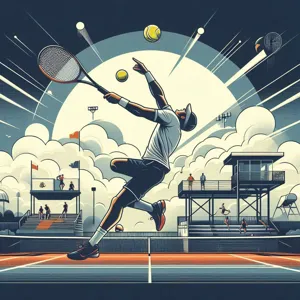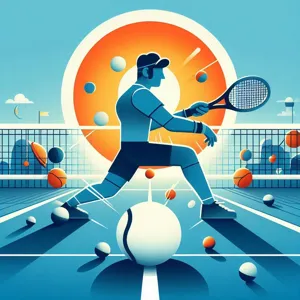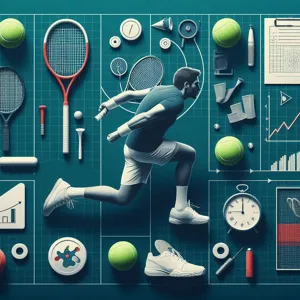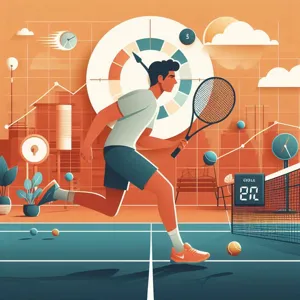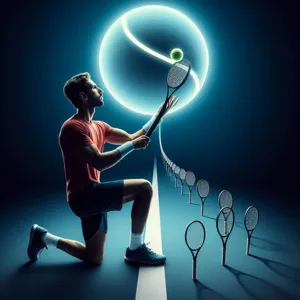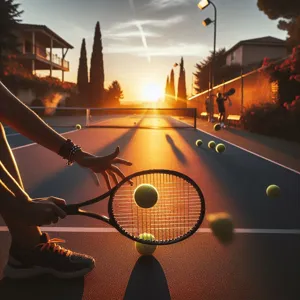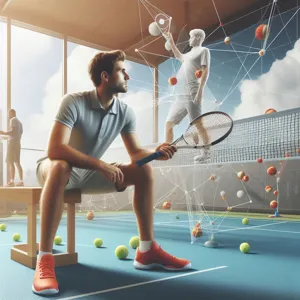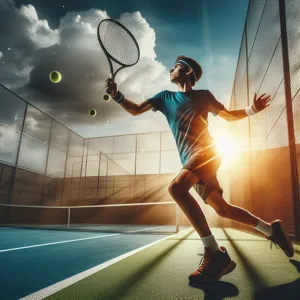Soccer, often referred to as the beautiful game, is more than just a sport; it’s a passion that ignites hearts and unites communities around the globe.
Whether you’re a beginner looking to kick-start your journey or an experienced player aiming to refine your skills, understanding the nuances of the game is essential for unlocking your full potential on the pitch. In this ultimate guide, we will delve into practical tips, expert techniques, and training methods designed to elevate your soccer abilities to new heights. From mastering essential dribbling and passing skills to developing your tactical awareness and fitness level, this comprehensive resource will equip you with everything you need to enhance your performance and become a more confident, capable player. Join us as we embark on this exciting journey to unleash your inner soccer star!
1. Understanding the Fundamentals of Soccer
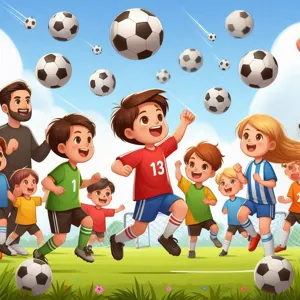
Understanding the fundamentals of soccer is essential for any player looking to elevate their game. At its core, soccer is a beautiful blend of strategy, skill, and teamwork, but before diving into advanced techniques or complex plays, it’s crucial to grasp the basic elements that form the foundation of the sport.
First and foremost, familiarize yourself with the rules of the game. Whether it’s knowing how many players are on the field, the dimensions of the pitch, or the offside rule, these regulations dictate how the game is played and can significantly impact your performance. Understanding the flow of the game, including fouls, free kicks, and corner kicks, is equally important, as it enables you to make informed decisions on the field.
Next, focus on the core skills: dribbling, passing, shooting, and defending. Dribbling is not just about moving the ball; it’s about maintaining control while navigating through opponents. practice various techniques, from simple toe-touches to advanced feints, to become more agile and unpredictable. Passing is the lifeblood of team play, so mastering different types of passes—such as short, long, and through balls—will enhance your ability to connect with teammates effectively.
Shooting is where creativity meets precision. Whether you’re aiming for power or finesse, practicing a range of shots from different angles will build your confidence in front of the goal. Likewise, understanding defensive tactics is crucial, as good defenders can disrupt their opponents’ flow and create counter-attacking opportunities. Work on your positioning and timing to become an adept defender who can anticipate and react to the opposing team’s moves.
Lastly, never underestimate the importance of physical fitness and mental resilience in soccer. Endurance, strength, and agility are key, so incorporate regular conditioning into your training regimen. Simultaneously, cultivate a positive mindset, as soccer can be as much a mental game as a physical one. Embrace challenges, learn from setbacks, and maintain a passion for improvement.
By solidifying your grasp on the fundamentals, you set yourself up for success as you journey through the various levels of soccer. These foundational skills and knowledge will not only improve your individual performance but also enhance your contribution to the team, ultimately unlocking your full potential on the pitch.
2. Setting Clear Goals for Skill Improvement
Setting clear goals for skill improvement is a fundamental step in your journey to becoming a better soccer player. Without defined objectives, it’s easy to lose focus and drift through practices and games without making tangible progress. Goals provide you with direction, motivation, and a way to measure your development over time.
Start by identifying specific areas of your game that you want to enhance. Do you need to work on your dribbling, passing accuracy, or perhaps your shooting technique? Break these larger categories down into smaller, manageable targets. For example, instead of vaguely aiming to “get better at shooting,” set a goal to “increase shot accuracy by 20% in the next month.” This specificity not only makes your objectives clearer but also gives you a concrete metric to evaluate your success.
once you’ve established your goals, consider implementing the SMART criteria: ensure that your objectives are Specific, Measurable, Achievable, Relevant, and Time-bound. This framework helps you create goals that are realistic and aligned with your overall aspirations as a player. For instance, rather than aiming to “improve physical fitness,” you might decide to “run three miles in under 25 minutes by the end of the season.”
Documenting your goals can also provide accountability and motivation. Keep a journal or use a digital app to track your progress, note your achievements, and reflect on areas needing more focus. Regularly revisiting and adjusting your goals as you progress will keep you engaged and challenged, ensuring that you remain committed to your skill development.
Incorporating clear goals into your training routine transforms the way you practice. Instead of going through the motions, you’ll approach each session with intent and purpose, honing your skills with a sharp focus on improvement. By setting clear, structured goals, you’re not just aiming to be a better player; you’re laying down the foundation for achieving your full potential on the soccer field.
3. The Importance of Consistent Practice

Consistent practice is the cornerstone of improving your soccer skills, and its significance cannot be overstated. Just like any other sport, soccer demands both physical prowess and mental acuity, and the only way to cultivate these attributes is through dedication and repetition. When you commit to regular practice, you’re not just honing your technical skills; you’re also building muscle memory, which is crucial during intense game situations where quick reflexes and instinctive actions can make all the difference.
Think of practice as a sculptor chiseling away at a block of marble. Each training session is a swing of the hammer, gradually revealing the masterpiece within. Whether you’re working on dribbling, passing, shooting, or defensive techniques, the more time you dedicate to each skill, the more naturally they will come to you during a match. It’s about creating a rhythm in your movements, a fluidity that allows you to perform under pressure.
Moreover, consistent practice fosters a growth mindset. As you see improvement over time, your confidence will soar, propelling you to tackle new challenges and refine your game even further. Remember, the road to excellence is paved with patience and perseverance. So, set aside time each week for focused training sessions, incorporate drills that challenge different aspects of your play, and don’t shy away from seeking feedback from coaches or experienced players. This commitment to consistent practice will not only enhance your technical skills but also deepen your understanding of the game, making you a more versatile and effective player on the field.
4. Essential Drills for Developing Technical Skills
To excel on the soccer field, mastering technical skills is non-negotiable. These abilities form the foundation of your game, allowing for fluid movement, precise passing, and effective ball control. Here, we’ll explore essential drills designed to elevate your technical skills, regardless of your current level.
### 1. **Dribbling Drills**
Start with a simple cone drill to enhance your dribbling ability. Set up a series of cones in a straight line, spaced about a meter apart. Dribble the ball in and out of the cones using both feet. Focus on controlling the ball with the inside and outside of your foot, maintaining a low center of gravity. As you progress, challenge yourself by increasing your speed or reducing the spacing between cones.
### 2. **Passing Precision**
Accurate passing can make or break a play, so practicing your passing technique is crucial. Pair up with a teammate and stand about ten yards apart. Use different types of passes: short, long, and driven. Pay attention to your body positioning, and aim for your partner’s feet. As you gain confidence, increase the distance between you or add one-touch passing to elevate the challenge.
### 3. **Receiving the Ball**
Effective receiving is just as important as passing. To practice this, have a partner throw or roll the ball towards you from various angles. Focus on cushioning the ball with your first touch, using different parts of your body—feet, thighs, and chest. The key here is to maintain control and prepare for your next move, whether it’s a pass, a dribble, or a shot.
### 4. **Shooting Practice**
Developing a powerful and accurate shot is vital for any aspiring player. Set up a few cones or targets within the goal and take turns shooting from different distances. Experiment with techniques—instep drives, volleys, and chips. Aim for precision by trying to hit the targets, and track your progress over time to see how your accuracy improves.
### 5. **Small-Sided Games**
Finally, nothing beats the real game experience. Organize small-sided games (like 3v3 or 4v4) to put your skills to the test in a dynamic environment. These smaller games encourage quick thinking, precise passing, and effective dribbling, while also allowing for more touches on the ball. The more you practice in game-like situations, the better prepared you’ll be for match day.
Incorporating these essential drills into your training routine will not only develop your technical skills but also boost your confidence on the field. Remember, consistency is the key—dedicate time to practice regularly, and you’ll see significant improvements in your game. Unlock your potential, and watch as your skills shine through in every match!
5. Improving Your Physical Fitness for Soccer
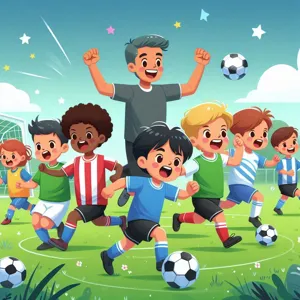
Improving your physical fitness for soccer is not just about running laps or hitting the gym; it’s a multidimensional approach that enhances your overall performance on the field. Soccer demands a unique combination of endurance, strength, agility, and flexibility. To truly unlock your potential, it’s essential to focus on these areas through a well-rounded fitness regimen.
Start with cardiovascular training, which is the backbone of any soccer player’s fitness. High-intensity interval training (HIIT) is particularly effective, simulating the stop-and-go nature of a soccer match. Incorporating sprints, shuttle runs, and agility drills will help build your stamina, allowing you to maintain peak performance throughout the game. Aim for sessions that elevate your heart rate while also mimicking the movements you make during play.
Next, strength training is crucial. Building muscle strength not only helps you shield the ball and win tackles but also reduces the risk of injury. Focus on compound exercises that engage multiple muscle groups—think squats, deadlifts, and lunges. Additionally, don’t overlook your core. A strong core stabilizes your body and improves balance, which is vital for quick changes in direction and maintaining control of the ball.
Agility training cannot be ignored either. Incorporate ladder drills, cone drills, and plyometric exercises into your routine. These activities enhance your quickness and coordination, allowing you to navigate the field with finesse. Remember, soccer is often won or lost in the moments when a player needs to change direction or accelerate, so honing this skill can give you the competitive edge.
Finally, flexibility is key to preventing injuries and enhancing your range of motion. Regular stretching, yoga, or dynamic warm-ups can significantly improve your flexibility. Pay special attention to your hamstrings, calves, and hip flexors, as these muscles are heavily engaged during a match.
In summary, improving your physical fitness for soccer is an ongoing journey that encompasses cardiovascular endurance, strength, agility, and flexibility. By committing to a balanced training regimen that targets these areas, you’ll not only elevate your game but also enjoy the sport more fully. Remember, the fitter you are, the better you can play—and that’s where the real joy of soccer lies.
6. Mastering Ball Control and Dribbling Techniques
Mastering ball control and dribbling techniques is essential to elevating your soccer game and unlocking your true potential on the field. The ability to maneuver the ball with precision not only enhances your personal performance but also contributes to your team’s success. Imagine gliding past defenders with effortless ease, or executing a flawless nutmeg that leaves your opponent in the dust. These moments of brilliance stem from diligent practice and a solid understanding of fundamental techniques.
Start by focusing on the basics of ball control. Whether you’re receiving a pass or retrieving the ball from an opponent, mastering the art of first touches sets the tone for your play. Use different parts of your foot—the inside, outside, and even the sole—to cushion the ball effectively. Engage in drills that emphasize receiving the ball at various angles and speeds, allowing you to develop a keen sense of timing and positioning.
Once you feel confident with your ball control, it’s time to delve into dribbling techniques. Begin with simple dribbling exercises, such as weaving through cones or practicing footwork in tight spaces. As you progress, incorporate changes of pace and direction to keep defenders guessing. Mastering moves such as step-overs, feints, and the classic drag-back will not only enhance your individual skill set but will also make you a more dynamic player on the pitch.
Remember, consistency is key. Set aside time each week to practice your ball control and dribbling skills, and don’t shy away from challenging yourself with new drills. Watching professional players can also provide inspiration and insight into advanced techniques. Observe how they use their body to shield the ball or their footwork to create space. By incorporating these elements into your training, you’ll find yourself becoming more confident and effective in your dribbling.
Ultimately, mastering ball control and dribbling is about more than just individual flair; it’s about creating opportunities for you and your teammates. As you refine these skills, you’ll unlock new possibilities on the field, transforming into a player who not only competes but thrives. So lace up your boots, head out to the pitch, and start honing these vital skills that will undoubtedly elevate your game to new heights.
7. Enhancing Passing Accuracy and Vision
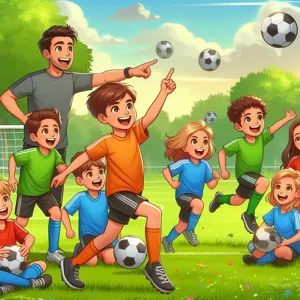
When it comes to soccer, passing accuracy and vision are the cornerstones of effective play. These skills not only elevate your game but also enhance your team’s performance on the field. Improving your passing accuracy requires a blend of technique, practice, and awareness, while honing your vision involves anticipating the movements of both teammates and opponents.
To enhance your passing accuracy, start by focusing on your body positioning. Ensure that you’re balanced and aligned with your target before making the pass. Use the inside of your foot for short, precise passes, and reserve the laces for longer distances. Practicing with a wall can be incredibly beneficial; aim for a specific spot on the wall, and work on controlling the power and direction of your passes. Gradually increase the distance and angle of your passes to simulate game-like scenarios.
However, passing isn’t just about technique; it’s about understanding the game around you. Developing your vision means training yourself to scan the field continuously. Before receiving the ball, take a moment to assess your surroundings. Where are your teammates? Who is making a run? What spaces are available? This awareness is crucial for making quick decisions, allowing you to execute passes that not only reach your teammate but also set them up for the next play.
Incorporate drills that encourage both passing and movement, such as small-sided games or rondos. These exercises force you to think on your feet, improving both your accuracy and vision under pressure. The more you practice, the more instinctive your passing will become, transforming you into a playmaker who can dictate the tempo of the game.
Remember, enhancing your passing accuracy and vision is a continual journey. Embrace the process, stay committed to your training, and watch as your contributions on the field reach new heights. With improved passing skills, you’ll not only unlock your potential but also inspire those around you to elevate their own game.
8. Developing Shooting Skills: Techniques and Tips
When it comes to soccer, the ability to shoot accurately and powerfully can be the difference between a great player and a game-changing one. Developing your shooting skills involves honing both your technique and your mental approach to scoring. Here are some essential techniques and tips to elevate your shooting game.
**1. Master the Basics:** Start with the fundamentals. Ensure that your body position is correct: face the target, plant your non-kicking foot beside the ball, and keep your head down to maintain focus. Use the laces of your shoe for powerful shots, and make contact with the ball at its center to achieve a clean strike.
**2. Practice Different Types of Shots:** A versatile shooter can adapt to various game situations. Work on different shot types, such as volleys, half-volleys, chips, and driven shots. Each shot requires a unique technique, so dedicate time to practice each one until you feel comfortable executing them in a match.
**3. Focus on Accuracy Before Power:** While it’s tempting to go for sheer power, accuracy should be your priority, especially when you’re starting. Set up targets in the goal—cones, small nets, or even water bottles—to challenge yourself. Aim for specific spots and gradually increase the distance as your precision improves.
**4. Incorporate Drills into Your Routine:** Set up shooting drills that simulate game scenarios. For example, practice shooting from different angles, using both feet, or receiving a pass before taking a shot. Incorporating pressure—like having a defender close by—can also help prepare you for real match situations.
**5. Analyze and Adjust:** Record your shooting sessions and analyze your technique. look for areas of improvement, such as your follow-through, balance, or foot placement. Watching professional players can also provide insights into effective shooting techniques. Mimicking their movements can help you understand the mechanics of a successful shot.
**6. Stay Mentally Strong:** A confident mindset can significantly impact your shooting performance. Visualize successful shots and focus on positive outcomes to build your confidence. During matches, stay composed and trust in your training. Remember that even the best players miss shots; the key is to remain resilient and learn from each attempt.
By actively engaging in these techniques and tips, you’ll not only improve your shooting skills but also enhance your overall game. With consistent practice and a focus on both technique and mental preparation, you’ll find yourself unlocking your potential and becoming a formidable force on the soccer field.
9. Tactical Awareness: Reading the Game
Tactical awareness is a game-changer in soccer, separating the good players from the great ones. It involves understanding the flow of the game, anticipating opponents’ moves, and making split-second decisions that can alter the outcome of a match. To improve your tactical awareness, start by observing games, both live and on video. Pay attention to how players position themselves, how they communicate with teammates, and how they respond to the shifting dynamics of play.
While training, practice situational drills that mimic real-game scenarios. This will help you develop a sense of timing and spatial awareness, allowing you to read the game more effectively. Visualize different game situations and plan your responses ahead of time. This mental preparation can enhance your ability to react swiftly during matches.
Additionally, engage with your coach and teammates to discuss strategies and tactics. Understanding your team’s formation and each player’s role will give you context when making decisions on the pitch. Develop a keen eye for recognizing patterns in your opponents’ play; are they favoring one side of the field? Do they tend to make certain runs?
Finally, never underestimate the power of experience. The more you play and observe, the better your instinct will become. Embrace every opportunity to learn from each match, practice session, and even from watching professionals play. By honing your tactical awareness, you’ll not only improve your own game but also elevate your team’s overall performance.
10. Working on Defensive Skills and Positioning
When it comes to excelling in soccer, defensive skills and positioning are often overlooked but are crucial for a well-rounded player. Mastering these elements can transform not only your individual performance but also the dynamics of your entire team. So, how do you effectively sharpen these vital skills?
First and foremost, understanding the fundamentals of defensive positioning is essential. As a defender, your primary role is to anticipate the movements of your opponents while maintaining your own position on the field. This involves a keen awareness of both the ball and the players around you. Practice drills that focus on maintaining a low center of gravity, which will help you remain agile and ready to react. Shadowing drills, where you mimic the movements of an attacking player, can enhance your ability to stay close to your opponent without committing too early.
Additionally, developing your tackling technique is key. There are various methods—such as the block tackle and the poke tackle—that can be effective depending on the situation. Spend time practicing these techniques in a controlled environment, gradually increasing the intensity as you gain confidence. Remember, a well-timed tackle can not only stop an opponent’s advance but also create opportunities for counterattacks.
Positioning is about more than just where you stand; it’s about awareness and decision-making. Incorporate small-sided games into your training routine, as they force you to think quickly and make strategic decisions in tight spaces. These scenarios simulate real-match situations, honing your ability to read the game and position yourself effectively to intercept passes or cut off dribbling lanes.
Finally, communication is a vital component of effective defense. Engage with your teammates, calling out instructions and providing support. As you work on your defensive skills, remember that football is a team sport. A well-organized defense relies on each player understanding their role and working together seamlessly.
By dedicating time and effort to improving your defensive skills and positioning, you’ll become a formidable presence on the field, capable of shutting down even the most skilled attackers while empowering your team to thrive. Embrace the challenge, and watch your overall game elevate to new heights.
11. The Role of Mental Toughness in Soccer
Mental toughness is a critical yet often overlooked aspect of soccer that can significantly impact a player’s performance on the field. While technical skills, physical fitness, and tactical awareness are essential, it is the mental game that can often make the difference between success and failure.
In soccer, mental toughness encompasses a range of attributes, including resilience, focus, confidence, and the ability to handle pressure. Imagine being in the final minutes of a tied game, with the weight of the world on your shoulders as you prepare to take a penalty kick. A mentally tough player thrives in such situations, maintaining composure and executing their skills with precision, while others may falter under the stress.
Building mental toughness begins with developing a positive mindset. Visualization techniques can be incredibly beneficial; by mentally rehearsing successful plays and outcomes, you can train your brain to respond positively in high-pressure scenarios. Additionally, setting achievable goals and celebrating small victories along the way can boost your confidence, reinforcing the belief that you can overcome challenges.
Moreover, the ability to bounce back from setbacks is a hallmark of mental toughness. Soccer is inherently unpredictable—whether it’s a missed shot, a critical foul, or an unexpected loss, how you respond to these moments can define your development as a player. Embracing failure as a learning opportunity allows you to grow stronger and more resilient, rather than allowing it to shake your confidence.
Finally, cultivating a supportive network can enhance your mental toughness. Engaging with coaches, teammates, and mentors who encourage you and provide constructive feedback can help you navigate the emotional highs and lows of the game. Remember, soccer is as much about the mind as it is about the body; nurturing your mental fortitude will not only enhance your performance but also enrich your overall experience on the pitch.
In summary, mental toughness is a vital quality for any aspiring soccer player. By developing resilience, maintaining a positive mindset, learning from setbacks, and fostering a supportive network, you can unlock your true potential and elevate your game to new heights.
12. Learning from the Pros: Analyzing Matches
One of the most effective ways to elevate your soccer skills is by analyzing matches played by the pros. Watching professional games isn’t just about enjoying the spectacle; it’s an invaluable opportunity to learn from the best in the sport. As you sit down to watch a match, approach it with a critical eye. Pay attention to the movements, strategies, and decision-making processes of professional players.
Start by focusing on specific aspects of the game. Notice how attackers create space and make runs to receive the ball, or observe how defenders position themselves to block passing lanes and intercept the ball. Take notes on the different formations and tactics used by teams, and consider how these strategies can be applied to your own gameplay.
Additionally, utilize resources like match highlights, tactical breakdowns, and player interviews. Many analysts provide insights that can deepen your understanding of the game. For instance, watching a breakdown of Lionel Messi’s dribbling techniques or studying the positional play of N’Golo Kanté can provide unique perspectives on mastering specific skills.
Don’t forget to analyze your own matches as well. Recording your games and reviewing them afterward can reveal strengths to build on and weaknesses to address. By comparing your performance to that of professionals, you’ll gain a clearer picture of where you stand and where you need to improve.
Ultimately, learning from the pros is about more than just mimicking their moves; it’s about developing a deeper understanding of the game. By integrating these insights into your practice and match play, you’ll be well on your way to unlocking your full potential on the soccer field.
13. The Importance of Teamwork and Communication
In the beautiful game of soccer, individual talent shines, but it is the strength of teamwork and communication that truly elevates a player’s performance and the overall success of a team. Soccer is inherently a collective sport, where the synergy between players can make the difference between victory and defeat. Understanding the importance of teamwork and communication is not just an aspect of the game; it’s the very foundation upon which great teams are built.
Effective communication on the field is crucial. It allows players to anticipate each other’s movements, whether it’s a defender calling for the ball or a forward signaling for support on a breakaway. Verbal cues, hand signals, and even eye contact can convey vital information that keeps the team coordinated and focused. Practicing open lines of communication during training sessions fosters trust and understanding among teammates, creating a seamless flow that can confuse opponents and capitalize on scoring opportunities.
Moreover, teamwork extends beyond just passing the ball; it encompasses understanding each other’s strengths and weaknesses. A player who knows the tendency of their teammate to cut inside or their preferred foot can make split-second decisions that lead to successful plays. Encouraging an environment where players feel comfortable sharing their ideas and strategies can lead to innovative plays and a more cohesive team dynamic.
Furthermore, teamwork builds resilience. In moments of pressure, a united team can provide the emotional and tactical support necessary to maintain composure and execution. When players communicate effectively, they can lift each other’s spirits, strategize in real-time, and adapt to the unfolding situation on the pitch. This chemistry not only enhances individual performance but also solidifies team morale, making every player feel like an integral part of the mission.
In conclusion, honing your soccer skills involves more than just dribbling, shooting, or defending; it necessitates a deep appreciation for the art of teamwork and communication. By prioritizing these elements in your training and on-field play, you’ll not only unlock your potential as an individual player but also contribute to a stronger, more dynamic team that can rise to any challenge.
14. Tracking Your Progress and Staying Motivated
Tracking your progress and staying motivated are essential components of becoming a better soccer player. As with any skill, improvement doesn’t happen overnight. It requires persistence, dedication, and a clear understanding of your growth over time. By implementing effective tracking methods, you can celebrate your achievements, identify areas for improvement, and maintain your enthusiasm for the game.
One effective way to keep tabs on your progress is by maintaining a soccer journal. In this journal, jot down your training sessions, match performances, and any specific skills you worked on. Note the drills you completed, the distances you ran, and even your feelings during practice. This documentation not only helps you recognize patterns in your development but also serves as a motivational tool when you look back and see how far you’ve come.
In addition to journaling, consider using digital tools and apps specifically designed for athletes. Many of these platforms allow you to log your training sessions, set goals, and track performance metrics like speed, accuracy, and endurance. Visual representations of your progress can be incredibly motivating, as they provide tangible evidence of your hard work.
Setting short-term and long-term goals is another effective strategy for staying motivated. Short-term goals might include improving your dribbling skills or increasing your stamina over a few weeks, while long-term goals could involve making the starting lineup for your team or mastering a specific technique by the end of the season. By breaking down your ambitions into manageable steps, you create a sense of purpose in your training, making it easier to stay committed.
Finally, surround yourself with a supportive community. Whether it’s teammates, coaches, or friends, having people who encourage you and hold you accountable can significantly boost your motivation. Share your goals with them, celebrate your successes together, and lean on each other during challenging times. This camaraderie not only enhances your enjoyment of the game but also keeps the competitive spirit alive.
By consistently tracking your progress and nurturing your motivation, you can unlock your potential and elevate your soccer skills to new heights. Remember, every small improvement counts, and with each step forward, you’re one step closer to achieving your goals on the pitch.
15. Resources for Continued Learning and Improvement
To truly unlock your potential on the soccer field, continuous learning and improvement are key. Fortunately, a wealth of resources is available to help players of all levels enhance their skills, tactical understanding, and overall game performance. Here are some invaluable tools to consider integrating into your training regimen:
1. **Online Courses and Video Tutorials**: Websites like MasterClass, Udemy, and YouTube offer comprehensive courses taught by professional players and coaches. These platforms cover everything from basic dribbling techniques to advanced strategies for positioning and teamwork. Watching these tutorials not only gives you visual guidance but also allows you to learn at your own pace.
2. **Books and E-books**: There’s a plethora of literature available that delves deep into the mechanics of soccer. Titles such as “Soccer Tough” by Dan Abrahams and “The Soccer Coaching Handbook” provide insights into mental preparation, skill development, and coaching techniques. Make reading a part of your routine to stay inspired and informed.
3. **Apps and Training Tools**: Leverage technology with apps specifically designed for soccer training. Applications like DribbleUp and SoccerPulse allow you to track your progress, participate in drills, and even connect with other players. These tools can provide you with personalized training plans and feedback, making your practice sessions more effective.
4. **Local Clinics and Camps**: Seek out soccer clinics and camps in your area. These events often feature experienced coaches who can provide hands-on training and advice tailored to your skill level. Attending these sessions not only offers direct feedback but also the opportunity to network with other passionate players.
5. **Soccer Podcasts and Webinars**: For those who prefer auditory learning, consider tuning into soccer-focused podcasts or webinars. Many cover topics such as coaching strategies, player development, and insights from sports psychologists. listening while commuting or exercising can turn idle time into productive learning sessions.
6. **Join a Community**: Engaging with fellow soccer enthusiasts can be incredibly beneficial. Whether it’s online forums, social media groups, or local clubs, connecting with others can foster a supportive environment where you can share tips, experiences, and challenges. Don’t hesitate to ask for advice or mentorship from more experienced players.
By incorporating these resources into your training, you can stay ahead of the game and continually refine your skills. Remember, improvement in soccer, as in any sport, is a journey that requires dedication, curiosity, and a willingness to learn. Embrace these tools, and watch as your abilities on the pitch flourish!
As we conclude our ultimate guide to improving your soccer skills, remember that unlocking your potential on the field is a journey that involves dedication, practice, and a willingness to learn. The techniques and strategies we’ve shared are designed to enhance your game, boost your confidence, and ultimately help you become the player you’ve always aspired to be. Whether you’re perfecting your dribbling, sharpening your passing, or honing your tactical awareness, each step you take brings you closer to your goals. Embrace the challenges, celebrate your progress, and don’t forget to enjoy the beautiful game! Now, lace up your cleats, hit the pitch, and start applying what you’ve learned—your soccer adventure awaits!








